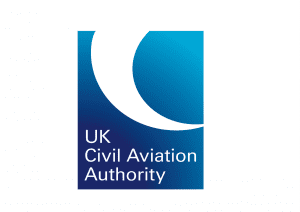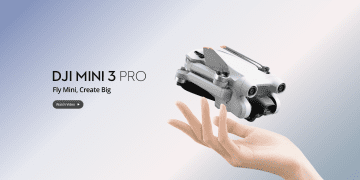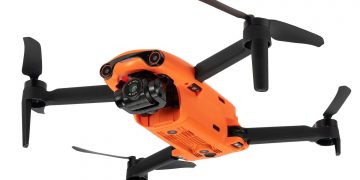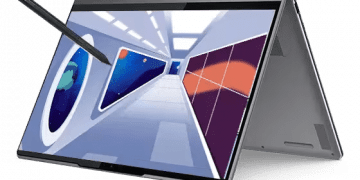Navigating the Skies Safely with UK Drone Laws
In the United Kingdom, drones have transitioned from being a niche hobby to a mainstream activity enjoyed by many. Whether you’re a professional photographer capturing breathtaking landscapes, a farmer using drones for crop monitoring, or a tech enthusiast exploring the capabilities of your new UAV, drones offer a multitude of possibilities. However, as these unmanned aerial vehicles (UAVs) become more prevalent, the need for clear and comprehensive regulations has never been more crucial.
The UK’s Civil Aviation Authority (CAA) serves as the governing body that oversees all aspects of civil aviation, including drone operations. The CAA has put forth a set of rules and guidelines aimed at ensuring that drones are operated in a manner that is safe for both the operators and the general public. These regulations cover various aspects, including the drone’s weight, speed, and altitude, as well as where it can and cannot be flown.
In this comprehensive guide, we’ll walk you through the key points of UK drone laws that you need to be aware of. From weight categories and speed limitations to no-fly zones and registration requirements, this article aims to provide you with all the information you need to operate your drone safely and legally in the UK.
So, before you take your drone out for its next flight, let’s dive into the specifics to ensure you’re fully informed and in compliance with all the necessary regulations.
Licensing Requirements:
In the UK, the regulations are categorized based on the weight of the drone:
- Drones weighing 250 grams or more: Pilots need to complete an online education and competency test called the “Drone and Model Aircraft Registration and Education Scheme.” After passing the test, pilots receive an Operator ID and must display it on their drones.
- Drones weighing 7 kilograms or more: Pilots need to obtain an Operational Authorization from the Civil Aviation Authority (CAA).
Consumer Drones
Consumer drones are the next step up from toy drones and offer a wide range of features and capabilities that make them suitable for various applications. These drones typically weigh between 250 grams and 20 kilograms and are the go-to choice for many hobbyists and professionals alike.
Features and Capabilities
Consumer drones are often packed with advanced features that elevate them far beyond the capabilities of toy drones. These can include high-resolution cameras, GPS stabilization, and even autonomous flight modes. Many consumer drones are designed for specific tasks such as aerial photography, videography, and even some light industrial applications like surveying or agricultural monitoring.
Where Can You Fly Them?
The CAA has specific guidelines for flying consumer drones, given their increased capabilities and potential risks. These drones must not be flown higher than 400 feet above ground level and should always remain within the operator’s line of sight. Special permissions are required for flying in restricted areas like near airports or over densely populated regions.
Do You Need to Register a Consumer Drone?
In the UK, any drone weighing over 250 grams must be registered with the CAA. The operator must also pass an online theory test to obtain an Operator ID, which must be displayed on the drone. This ensures that the drone can be traced back to its owner in case of any incidents.
Safety Precautions
Safety is a significant concern when operating consumer drones. Always adhere to the CAA’s guidelines, which include not flying near other aircraft or over groups of people. It’s also advisable to have third-party liability insurance to cover any potential damages or injuries.
Additional Requirements and Guidelines
Some consumer drones come equipped with advanced safety features like obstacle avoidance and return-to-home functions. While these features add an extra layer of safety, they should not replace responsible flying practices. Always read the user manual thoroughly and familiarize yourself with all the drone’s features before taking it out for a flight.
Speed and Altitude Restrictions: Balancing Freedom and Safety
When it comes to flying drones in the United Kingdom, speed and altitude are two critical factors that are regulated by the Civil Aviation Authority (CAA) to ensure the safety of both drone operators and the general public. Understanding these restrictions is essential for anyone planning to operate a drone in the UK, whether for recreational or commercial purposes.
Speed Limits: How Fast Can You Go?
The CAA has set a maximum speed limit for drones, capping it at 50 mph. This speed limit is in place to reduce the risk of accidents and to ensure that drone operators can maintain control of their UAVs at all times.
Why is There a Speed Limit?
A speed limit is essential for several reasons. High-speed drones can pose a significant risk to other aircraft, as well as to people and property on the ground. Additionally, flying at high speeds can make it challenging for operators to maintain control, especially in windy conditions or complex environments.
Exceptions to the Rule
While the 50 mph speed limit is a general rule, there may be specific scenarios where exceptions can be made. For instance, drones used in controlled environments for racing or other specialized activities may be permitted to exceed this limit, but this usually requires special authorization from the CAA.
Altitude Restrictions: How High Can You Fly?
The CAA mandates that drones must not fly higher than 400 feet above ground level. This altitude restriction is in place to minimize the risk of interference with manned aircraft, which generally fly at much higher altitudes.
Why 400 Feet?
The 400-foot altitude limit is considered a safe height that allows for a wide range of drone activities while minimizing the risk of collision with other aircraft. This height is also generally below the altitude where you would encounter commercial airliners, helicopters, and other manned aircraft.
Special Permissions for Higher Altitudes
In some cases, special permissions may be granted for drones to operate above the 400-foot limit. These are typically for specific industrial applications like high-altitude surveying or scientific research and require a detailed risk assessment and approval from the CAA.
WHERE CAN I FLY MY DRONE IN THE UK?
Visual Line of Sight and Distance: Keeping Your Drone Within View
One of the most fundamental rules for drone operation in the United Kingdom is the requirement to maintain a Visual Line of Sight (VLOS) with your drone at all times. This rule, enforced by the Civil Aviation Authority (CAA), is designed to ensure that operators can react promptly to any unexpected situations and maintain control of their drones.
What Does Visual Line of Sight (VLOS) Mean?
Visual Line of Sight means that the drone operator must be able to see the drone with their own eyes at all times during the flight. This ensures that the operator can navigate the drone safely, avoiding obstacles, other aircraft, and any potential hazards that may arise.
Why is VLOS Important?
Maintaining VLOS is crucial for several reasons. Firstly, it allows the operator to make real-time judgments about the drone’s altitude, direction, and speed. Secondly, it enables quick reactions to unexpected situations, such as sudden changes in weather conditions or the appearance of other aircraft in the vicinity.
Distance Limitations: How Far Can You Go?
In the UK, the maximum distance a drone can be from the operator is defined as 500 meters horizontally and 120 meters vertically. These limits are set to ensure that the drone remains within VLOS and can be controlled effectively.
Why These Specific Distances?
The 500-meter horizontal and 120-meter vertical distance limitations are considered to be the maximum ranges at which an average person can maintain a clear visual line of sight with a drone. Beyond these distances, it becomes increasingly difficult to see the drone clearly, making it challenging to control and increasing the risk of accidents.
Exceptions and Special Cases
While VLOS and distance limitations are the general rules, there are some exceptions for specialized drone operations. For example, Extended Visual Line of Sight (EVLOS) operations allow for a slightly greater distance, provided there is a trained observer assisting the operator. However, these exceptions usually require special approval from the CAA and are subject to stringent conditions.
Drone Registration and Operator IDs: Your Ticket to the Skies
In the United Kingdom, the Civil Aviation Authority (CAA) has made it mandatory for drone operators to register their drones and obtain an Operator ID if their drone weighs more than 250 grams. This registration process is a crucial step in ensuring responsible drone usage and accountability among operators.
Why is Registration Necessary?
The primary purpose of drone registration is to create a traceable link between the drone and its operator. This is especially important in case of incidents involving property damage, privacy invasion, or airspace violations. Registration ensures that operators are accountable for their actions and that drones can be easily identified by authorities.
The Legal Implications
Failure to register a drone that falls within the weight criteria can result in legal repercussions, including fines and, in extreme cases, criminal charges. Therefore, it’s not just a recommendation but a legal requirement to register your drone if it weighs over 250 grams.
How to Register Your Drone
Registering your drone with the CAA is a straightforward online process. Operators are required to pass an online theory test that covers the basics of drone operation and safety. Upon successful completion, you will receive an Operator ID, which must be displayed on your drone.
The Theory Test
The online theory test is designed to ensure that drone operators have a basic understanding of the rules, regulations, and safety procedures associated with drone flying. The test typically consists of multiple-choice questions and is accessible to people of all skill levels.
Operator IDs: What Are They and Why Do You Need One?
Once you pass the theory test, you will be issued an Operator ID. This unique identification number must be displayed on your drone in a manner that is easily visible. The Operator ID serves as a direct link to you, the operator, making it easier for authorities to trace the drone back to its owner if necessary.
Renewal and Validity
Operator IDs and drone registrations are generally valid for one year and must be renewed annually. The CAA will usually send a reminder as the expiration date approaches, but it’s the operator’s responsibility to ensure that their registration is up-to-date.
Additional Regulations and Guidelines: Beyond the Basics
While the primary rules around drone weight, speed, altitude, visual line of sight, and registration cover the essentials, there are additional regulations and guidelines that drone operators in the United Kingdom should be aware of. These extra rules are designed to address specific scenarios and further ensure the safety and responsible use of drones.
Insurance: Covering Your Bases
While not a legal requirement for recreational drone use, it’s highly advisable to have third-party liability insurance. This insurance can cover potential damages or injuries caused by your drone, offering financial protection in case of accidents.
Why Consider Insurance?
Drones, especially those in the consumer and commercial categories, can be expensive pieces of equipment. Insurance not only covers the cost of the drone in case of damage but also protects you from potential legal costs and compensation claims.
Privacy Laws: Respecting Boundaries
If your drone is equipped with a camera, you must adhere to UK privacy laws. This means not capturing images or videos of individuals without their consent, especially in private settings like homes or gardens.
The Data Protection Act
For commercial operators who capture video or images, compliance with the Data Protection Act is essential. This law governs the collection and use of personal data and applies to drone operators who use their drones for surveillance or data collection.
No-Fly Zones: Off-Limits Areas
Certain areas are designated as no-fly zones for drones. These include areas around airports, government buildings, and military installations. Flying in these zones without permission is illegal and can result in severe penalties.
How to Know Where Not to Fly
The CAA provides maps and apps that highlight no-fly zones. Always consult these resources before planning your flight to ensure you’re not violating any restrictions.
Special Use Cases: Advanced Operations
For specialized drone operations like night flying, flying over crowds, or flying multiple drones simultaneously, special permissions are required from the CAA. These permissions are granted based on a detailed risk assessment and often require the operator to have advanced qualifications.
Applying for Special Permissions
To apply for special permissions, you’ll typically need to submit a detailed operational plan to the CAA, outlining the safety measures you intend to implement. Approval is not guaranteed and is subject to rigorous scrutiny.
The Road to Responsible Drone Operation in the UK
As we’ve explored throughout this comprehensive guide, operating a drone in the United Kingdom involves much more than simply taking to the skies. From understanding weight categories and speed limitations to adhering to visual line of sight rules and registering your drone, there’s a plethora of regulations that every drone operator must be aware of. And these aren’t just guidelines; they are legally binding rules designed to ensure the safety of all airspace users and the general public.
The Importance of Compliance
Compliance with these regulations isn’t just a matter of legal obligation; it’s a testament to responsible drone operation. By adhering to the CAA’s rules, you’re not only protecting yourself from potential legal repercussions but also contributing to a safer and more responsible drone community. This is particularly crucial as drones continue to gain traction in various sectors, from agriculture and real estate to public safety and media coverage.
Staying Updated
It’s also worth noting that as the drone industry continues to evolve, so too will the regulations that govern it. The introduction of new technologies like Remote ID and advancements in drone capabilities will inevitably lead to updates in the rules. Therefore, staying informed and regularly checking for updates from the CAA is essential for every drone operator.
Your Role in the Drone Ecosystem
As a drone operator, you’re part of an exciting and rapidly evolving technological landscape. Your actions can set a precedent for safe and ethical drone usage, not just for yourself but for future operators as well. So, before you embark on your next drone adventure, make sure you’re fully versed in all the relevant regulations and guidelines.
Final Thoughts
In summary, the world of drones offers a wealth of opportunities but also comes with its own set of responsibilities. This guide aims to equip you with the knowledge you need to explore these opportunities responsibly. Whether you’re a hobbyist, a professional, or somewhere in between, understanding and complying with the CAA’s comprehensive set of rules is your first step towards a rewarding and safe drone flying experience in the UK.
Here is the link to the official UK drone laws page: UK Civil Aviation Authority – The Drone and Model Aircraft Code
Resources:
Drone Laws Around the World
If you found this guide on UK drone laws helpful, you might also be interested in understanding drone regulations in other parts of the world. On our website, we have comprehensive guides that delve into the intricacies of drone laws in the USA and Australia. Whether you’re planning to capture the breathtaking landscapes of the American wilderness or explore the stunning coastlines of Australia, knowing the local drone laws is crucial for a safe and legal flying experience. Check out our detailed articles on Drone Laws in the USA and Drone Laws in Australia to become a well-informed drone operator, no matter where your adventures take you.













